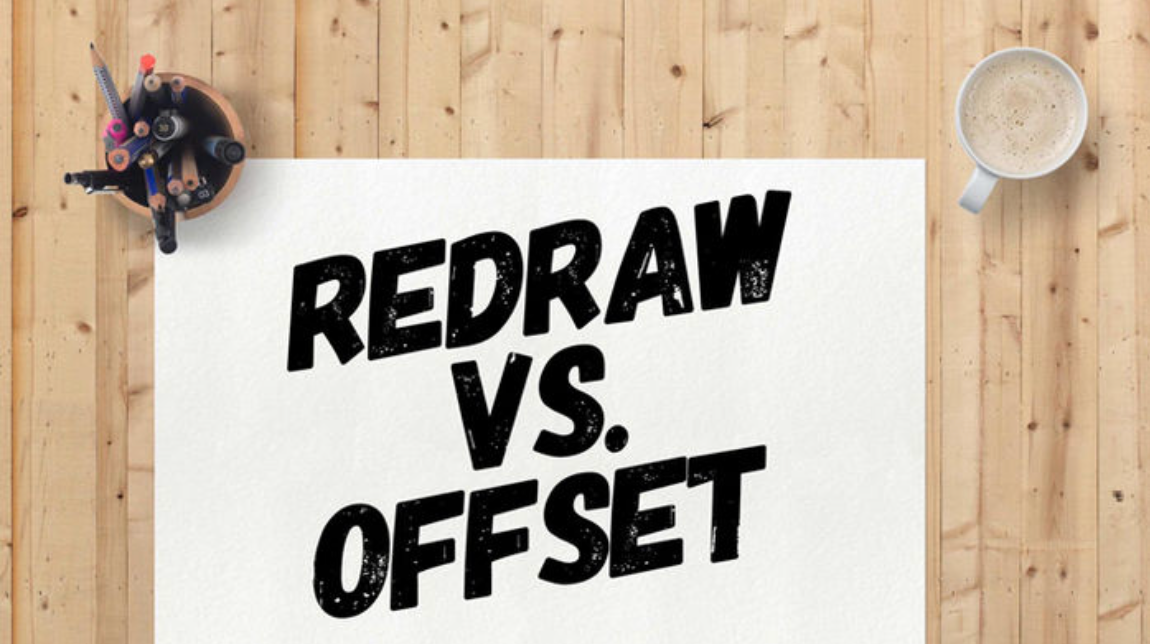Have you ever wondered if there’s a way to reduce your home loan interest charges while having access to extra funds? Look no further! The answer lies in understanding the upside and downside of redraws and offsets.
With the right strategy, you can save money on interest and pay off your home loan sooner. Besides the help of mortgage brokers or financial advisors, how do you choose between the two options? That’s where we come in!
In this comprehensive guide, we’ll explore the ins and outs of home loan redraw facilities and offset accounts, their pros and cons, and how to determine which one is best suited for your financial situation. So buckle up and get ready to dive into the world of home loan savings!
Short Summary
- Understand the pros and cons of a home loan redraw facility, including fees, restrictions, and reduced flexibility compared to offset accounts.
- Consider factors such as type of loan, feature availability, flexibility, and interest rates when selecting between a redraw or an offset account.
- Maximise the benefits by making regular extra repayments towards your mortgage and tracking your balance regularly. Consult with a mortgage broker for the best refinancing options.
Understanding Home Loan Redraw Facilities

Home loan redraw facilities offer homeowners the opportunity to access extra repayments made towards their home loan, potentially reducing the interest charged. It’s a common feature available for variable rate loans. However, not all loan types offer this feature, such as fixed rate home loans.
Redraw facilities and offset accounts both serve as tools to decrease home loan repayments and interest charges in a similar manner. They lower the balance of your home loan. This means that less money is subjected to interest payments.
While there are advantages to using a redraw account, such as access to additional funds, decreased interest charges, and accelerated mortgage payoff, there are also disadvantages to consider, including fees, restrictions, and limited loan options.
To make the most of a redraw account, it’s crucial to understand how it works and the types of home loans that offer this feature.
How does a redraw facility work?
A redraw account allows homeowners to access extra money they have already paid towards their home loan. This facility makes it easier and more convenient for them to access their funds when needed.
The home loan balance is reduced when additional repayments are made, and the redraw balance is calculated as the difference between the current mortgage balance and the mortgage balance if no additional repayments had been made.
By accessing these extra funds, homeowners can pay off their mortgage sooner and save on interest charges. However, it’s important to note that redraw facilities may not be available for certain loan types, such as fixed rate home loans.
Despite the limitations, the advantages of using a redraw account include access to additional funds, decreased interest charges, and a quicker mortgage payoff.
But how does this compare to offset accounts, and which one is the better option for you? Let’s explore further.
Types of home loans with redraw facilities
Most variable rate home loans and certain flexible fixed rate loans offer redraw facilities. Fixed rate loans, on the other hand, generally do not offer redraw facilities, as they are structured to provide a predetermined repayment amount over a fixed loan term.
This means that if you have a variable home loan, you’re more likely to have access to a redraw account, giving you the opportunity to access extra repayments and reduce your interest charges.
The Pros of a Home Loan Redraw Facility
The benefits of using a home loan redraw are undeniable. By providing access to additional funds, reducing interest charges, and accelerating mortgage payoff, a redraw can help homeowners achieve their financial goals sooner.
But, like any financial tool, it’s essential to understand how these benefits work and how to maximise them in your favour.
Access to extra funds
Redraw facilities provide homeowners with access to cash for emergencies or other expenses. By making additional repayments on top of the minimum loan repayment schedule, you build up a redraw balance that you can access when needed.
This can be a valuable financial safety net, ensuring that you have funds available for unexpected costs without dipping into your savings account or resorting to high-interest credit options.
Reduced interest charges
Extra repayments made towards a home loan can reduce interest charges by lowering the loan balance. This means that, over time, you’ll save money on interest payable, which can significantly impact the total cost of your home loan.
By utilising a redraw, you can take advantage of these interest savings while still having access to the extra funds when needed.
Faster mortgage payoff
Making extra repayments towards your home loan not only reduces your interest charges, but also helps you pay off your home loan sooner, allowing you to become mortgage-free faster and avoid paying interest for a longer period.
By utilising a redraw to make additional payments, you can accelerate the repayment of your loan and potentially save thousands of dollars in interest charges in the long run.
The Cons of a Home Loan Redraw Facility

While the benefits of a redraw is evident, it’s crucial to consider the drawbacks as well. Fees and restrictions, limited loan options, and less flexibility compared to offset accounts are some of the cons associated with redraw facilities.
By understanding these drawbacks, you can make an informed decision about whether a redraw is the right choice for your financial needs.
Fees and restrictions
Some lenders may charge fees for using a redraw or impose restrictions on the frequency and amount of redraws. This can impact the overall cost and flexibility of your home loan, so it’s essential to carefully review the fees and restrictions associated with a redraw before choosing this option.
Be sure to compare different lenders and personal loan products to find the one that best suits your needs and budget.
Limited loan options

Redraw facilities may not be available for all types of home loans, such as fixed rate loans. This means that if you have a fixed rate home loan or are considering switching to one, you may not be able to access the benefits of a redraw facility.
It’s essential to weigh the pros and cons of different loan types and consider whether a variable rate loan with a redraw facility is the best fit for your financial circumstances.
Comparing flexibility with offset accounts
Offset accounts generally offer more flexibility than redraw facilities for accessing extra repayments. An offset account is a separate transaction account linked to your home loan, allowing you to access your extra repayments more conveniently than through a redraw facility.
This can be an important consideration if you want easy access to your extra funds without having to navigate the fees and restrictions associated with a redraw facility.
However, it’s important to note that offset accounts may come with higher fees than redraw facilities, and they may not be compatible with all loan types.
As with any financial decision, it’s crucial to weigh the pros and cons of both options and consider your personal financial circumstances when deciding between a redraw facility and an offset account.
Redraw Facility vs Offset Account: Which One Suits You Best?

Deciding between a redraw facility and an offset account depends on factors such as personal financial circumstance and loan type.
By considering the availability, fees, and restrictions of both options, as well as your individual financial goals and preferences, you can make an informed decision that best suits your needs and maximises your home loan savings.
Redraw facilities allow you to access extra repayments you have made on your loan, while offset by offsets you have made on your loan.
Factors to consider
When choosing between a redraw facility and an offset account, it’s important to consider the type of loan you have, the availability of the feature, the flexibility of accessing funds, the interest rates, and the fees.
For example, if you have a variable rate home loan, a redraw facility may be more readily available and come with lower fees than an offset account. On the other hand, if you value the convenience and flexibility of accessing your extra repayments through a separate account, an offset account may be a better fit for you.
Additionally, consider the potential tax implications of each option, especially if you’re using the extra funds for investment purposes. Consult with a financial advisor or tax professional to ensure you fully understand the ramifications of your decision and choose the option that best aligns with your financial goals.
Personal financial situation
Your financial goals and preferences play a significant role in determining whether a redraw facility or offset account is more suitable for you. For example, if your primary goal is to pay off your home loan as quickly as possible and you don’t anticipate needing access to the extra funds, a redraw facility may be the better option.
On the other hand, if you value the convenience of accessing your extra repayments through a separate transaction account and are willing to pay higher fees for this flexibility, an offset account may be more suitable.
Ultimately, the choice between a redraw facility and an offset account comes down to your individual financial circumstances and priorities.
By carefully evaluating the pros and cons of each option, considering the type of loan you have, and assessing your financial goals and preferences, you can make an informed decision that best suits your needs and maximises your home loan savings.
Tips for Maximising the Benefits of a Redraw Facility

To make the most of a redraw facility, it’s essential to implement effective strategies that maximise the benefits and minimise the drawbacks.
By making regular extra repayments and keeping track of your redraw balance, you can ensure that you’re using your redraw facility to its fullest potential and reaping the financial rewards.
Regular extra repayments
Making consistent extra repayments towards your home loan can help maximize the benefits of a redraw facility. By establishing a direct debit from your bank account to your home loan account, you can automate your extra repayments and build up your redraw balance over time.
This not only helps you stay on track with your financial goals, but also ensures that you’re taking full advantage of the interest-saving benefits of your redraw facility.
Keeping track of redraw balance
Monitoring your redraw balance is crucial for ensuring that you’re making the most of your redraw facility and staying within your budget.
By regularly reviewing your loan statements or contacting your lender for an updated balance, you can plan for future expenses and determine whether you need to adjust your extra repayments to better align with your financial goals.
Making sure you keep track of your redraw balance is an important part of managing your finances, especially when dealing with offset accounts and redraw money.
Refinancing Your Home Loan: Adding a Redraw Facility or Offset Account

When refinancing your home loan, it’s important to consider the potential benefits of adding a redraw facility or offset account to your new loan. By evaluating your refinancing options and consulting with a lender or mortgage broker, you can determine the best course of action for your financial needs and maximise your home loan savings.
It is important to take the time to research and compare different lenders and loan products to ensure you get the best results.
Evaluating refinancing options
When considering refinancing your home loan to add a redraw facility or offset account, it’s crucial to weigh the pros and cons of each option. Assess the interest rates and fees associated with the new loan, as well as the availability of the desired feature.
Keep in mind that offset accounts may come with higher fees, but they generally offer more flexibility for accessing extra repayments than redraw facilities.
In addition to comparing interest rates and fees, consider the compatibility of each option with your loan type.
For instance, if you have a fixed rate home loan, you may not be able to access a redraw facility, while an offset account may still be an option. By carefully evaluating all of your refinancing options, you can make an informed decision that best suits your financial needs and goals.
Consulting with a lender or mortgage broker
Before making a decision, it’s essential to consult with a lender or mortgage broker to determine the best refinancing option for your needs, including whether to add a redraw facility or offset account.
These professionals can help you navigate the complexities of home loan refinancing and provide personalised guidance based on your financial situation and goals.
Remember, the right choice for you will depend on your individual circumstances and priorities, so don’t hesitate to seek professional advice to ensure you’re making the best decision for your financial future.
Summary
In conclusion, home loan redraw facilities and offset accounts offer valuable tools for homeowners looking to reduce interest charges, access additional funds, and pay off their mortgage faster.
While each option has its pros and cons, the best choice for you will depend on your personal financial situation, loan type, and financial goals.
By carefully evaluating the benefits and drawbacks of each option, consulting with a lender or mortgage broker, and implementing effective strategies to maximise the benefits of your chosen option, you can optimise your home loan savings and achieve your financial goals sooner.
So, whether you’re considering a redraw facility or an offset account, remember that the key to success is understanding your options, making informed decisions, and staying committed to your financial goals. With the right strategy and mindset, you can unlock the full potential of your home loan and move confidently toward a brighter financial future.
Frequently Asked Questions
Is redraw a good idea?
A redraw facility can be a great idea, as it allows you to save on interest costs, pay off your home loan sooner and still have access to funds when needed. It also encourages higher repayments towards the home loan principal, leading to further savings on interest charges.
Should I put all my money in redraw?
Given the potential to earn more interest through a redraw facility than a savings account, it may be beneficial to consider putting some of your money into a redraw facility.
Is it better to put money in redraw or offset?
Offset accounts offer more control over your money, while redraw facilities provide easy access to extra loan repayments. Both can help reduce the interest charges on your mortgage, making them both worthwhile options to consider.
Offset accounts and redraw facilities are both great options for reducing the interest charges on your mortgage. Offset accounts give you more control over your money, while redraw facilities provide easy access to extra money.
Does redraw affect repayments?
Yes, redrawing from your loan can affect repayments. When you access additional funds, your available redraw decreases, which causes your minimum repayments to increase in order to ensure your loan is repaid within the contracted term.
Additionally, after redrawing money, your regular repayments must continue, and the interest part of the repayment will increase due to paying interest on a higher loan amount.
What is the main difference between a redraw facility and an offset account?
A redraw facility enables access to extra home loan repayments, whereas an offset account is a separate linked transaction account.
FAQs for Understanding the Home Loan Redraw: Pros and Cons
A home loan redraw facility allows borrowers to access extra payments they’ve made on their mortgage. These additional funds can be withdrawn for other financial needs.
When you make extra payments on your home loan, the excess amount goes into the redraw facility. You can then withdraw these extra funds when needed, typically through your lender’s online banking or by contacting them directly.
The benefits include reducing interest on your mortgage, having access to extra funds in emergencies, and potentially paying off your loan faster by making additional payments.
Some lenders may charge fees for using a redraw facility. These can include transaction fees or limits on the number of free redraws per year. It’s essential to check with your lender for specific details.
The frequency of accessing funds varies by lender. Some offer unlimited redraws, while others may have restrictions or fees after a certain number of transactions. Check your loan terms for specifics.
Yes, lenders often set limits on the minimum and maximum amounts you can redraw. These limits can vary, so it’s important to understand your lender’s policies.
Disadvantages can include potential fees, reduced savings if funds are withdrawn frequently, and the risk of extending the loan term if redraws are not managed carefully.
A redraw facility involves accessing extra payments made on your loan, while an offset account is a separate account linked to your mortgage. The balance in the offset account reduces the interest charged on your loan principal.
Yes, you can use redraw funds for any purpose, such as home improvements, paying off other debts, or covering unexpected expenses. However, it’s wise to consider the impact on your mortgage repayment schedule.
Most home loans offer a redraw facility as an optional feature. To set it up, contact your lender and ensure you understand any terms, conditions, and fees associated with it.
A redraw facility can be beneficial for those who can make extra mortgage payments and want flexible access to those funds. However, it’s essential to assess your financial situation and goals before using it.
Consider the fees, potential impact on your mortgage term, and how frequently you might need to access the funds. It’s also important to ensure that using the redraw facility aligns with your long-term financial goals.

MANSOUR SOLTANI
With over two decades of experience in Australia’s real estate sector, Mansour has built a career specialising in the acquisition and sale of investment and commercial properties, spanning major metropolitan hubs and regional areas. As the founder and owner of a finance brokerage firm, he manages a loan portfolio exceeding $100 million while serving a broad range of clients nationwide.
A frequent contributor to money.com.au, Mansour has developed a deep understanding of diverse investment strategies, enabling him to provide valuable, well-informed perspectives on market trends and opportunities.

